MAI Over-Collateralization Calculator
Calculate Your MAI Collateral Requirements
MAI requires over-collateralization to maintain its stablecoin peg. Enter the amount of MAI you want to mint and select your collateral type to see how much crypto you need to deposit.
Your MAI Minting Details
Liquidation Risk Alert
Your position becomes vulnerable when the collateral value falls below the threshold. If the collateral price drops by 0%, your position could be liquidated.
Current Price: $1.00 MAI = $1.00 USDC
Collateral Value: $0
MAI is an over-collateralized stablecoin that requires 150-200% collateral to maintain its peg to the US dollar. Higher collateral ratios provide more safety against price volatility but require more locked assets.
Important: If the value of your collateral drops significantly, the protocol will automatically liquidate your position to maintain the stablecoin peg.
When you hear "stablecoin" you probably picture USDC or Tether, but there’s a smaller cousin trying to stay completely decentralized: MAI (MIMATIC) is an over‑collateralized stablecoin that is soft‑pegged to the US dollar at a 1:1 ratio and lives on the Polygon network.
What makes MAI different?
Most fiat‑backed stablecoins keep a reserve of dollars in a bank. MAI flips the script - it only accepts crypto tokens as collateral. The protocol that powers this model is called QiDAO, a set of smart contracts that let users lock assets, mint MAI, and trigger liquidations if the collateral value falls below a safety threshold.
How MAI stays pegged
The peg works because of three economic levers:
- Users must over‑collateralize, typically depositing 150%‑200% of the MAI they want to mint. That buffer absorbs price swings of the underlying tokens.
- If collateral drops too low, the protocol automatically liquidates the position, selling the assets for MAI and burning the excess. This cuts supply and nudges the price back toward $1.
- Arbitrage opportunities arise when MAI deviates from the dollar. Traders can buy cheap MAI on a DEX, trade it for USDC or USDT, and profit, which creates a self‑correcting pressure.
Because the whole system lives on Polygon, transaction fees are a fraction of what you’d pay on Ethereum mainnet, making the mint‑and‑burn cycle cheap enough for regular users.
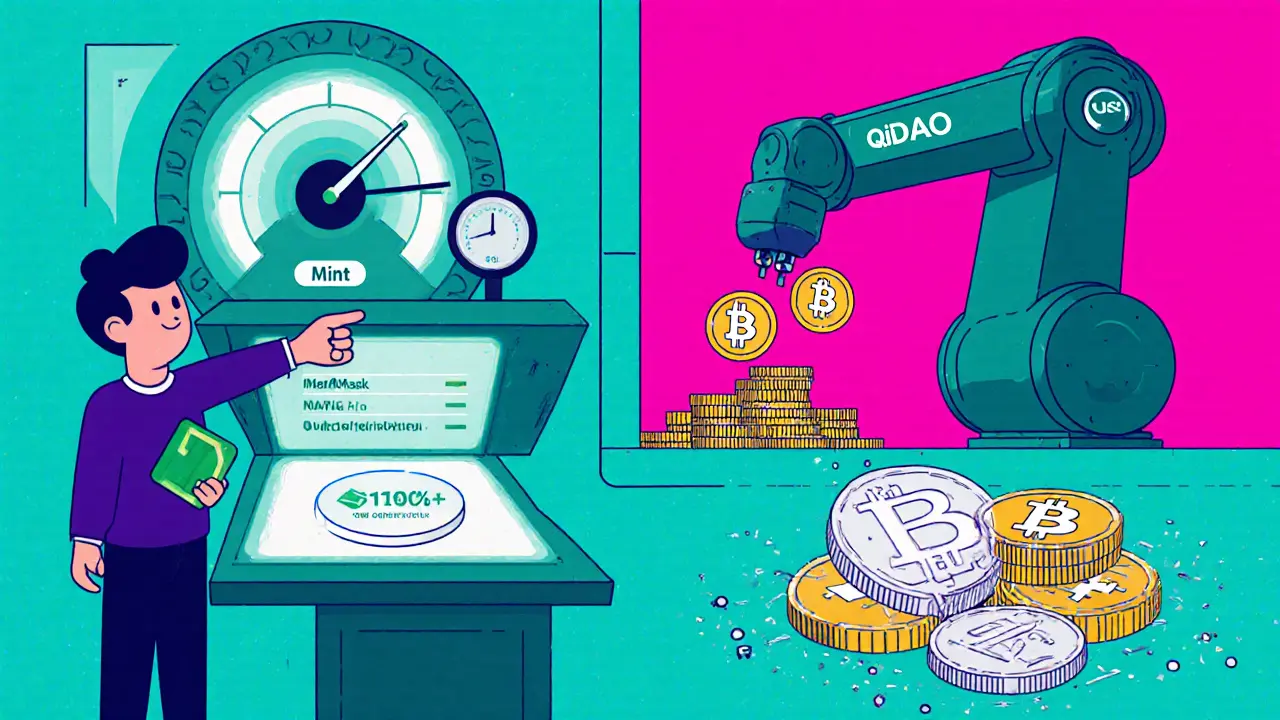
Where you can actually use MAI
Liquidity is the Achilles’ heel of any niche stablecoin. As of October2025, MAI trades on six decentralized venues, the biggest being the MIMATIC/USDC.E pair on Uniswap (Polygon) which accounts for about 60% of daily volume. Other spots include Quickswapv3, Curve, and Balancer, all on Polygon. There’s a beta deployment on Polygon zkEVM, but no active listings yet.
MAI vs. the big kids
| Coin | Market cap (USD) | 24‑h volume (USD) | Primary chain | Collateral type |
|---|---|---|---|---|
| MAI (MIMATIC) | $27.4M | ≈ $45K | Polygon | Crypto‑only (over‑collateralized) |
| USDC | $35B | $3.2B | Multiple (Ethereum, Solana, etc.) | Fiat‑backed |
| USDT | $80B | $6.5B | Multiple | Fiat‑backed |
| DAI | $5B | $450M | Ethereum | Crypto‑collateral (multi‑asset) |
From the numbers you can see why MAI is a niche player. Its market cap is a drop in the ocean compared with USDC or USDT, and daily trading volume is barely enough to move a few thousand dollars without noticeable slippage. That said, MAI offers something the fiat‑backed tokens can’t: complete decentralization without a bank account or KYC step.
Step‑by‑step: Minting MAI on Polygon
- 1. Install a Web3 wallet (MetaMask works great) and add the Polygon network.
- 2. Acquire some MATIC for gas fees - a few dollars’ worth is enough for a few transactions.
- 3. Go to mai.finance and connect your wallet.
- 4. Choose an approved collateral token (e.g., wMATIC, USDC, or other QiDAO‑listed assets).
- 5. Deposit the collateral. The UI will show the required over‑collateralization ratio (usually ~150%).
- 6. Press “Mint MAI” - the protocol mints the desired amount of MAI and sends it to your wallet.
- 7. To redeem, go back to the app, repay the MAI plus a small fee, and withdraw your collateral.
Keep an eye on the collateral ratio; if the market price of your locked asset slides, you could be liquidated automatically.
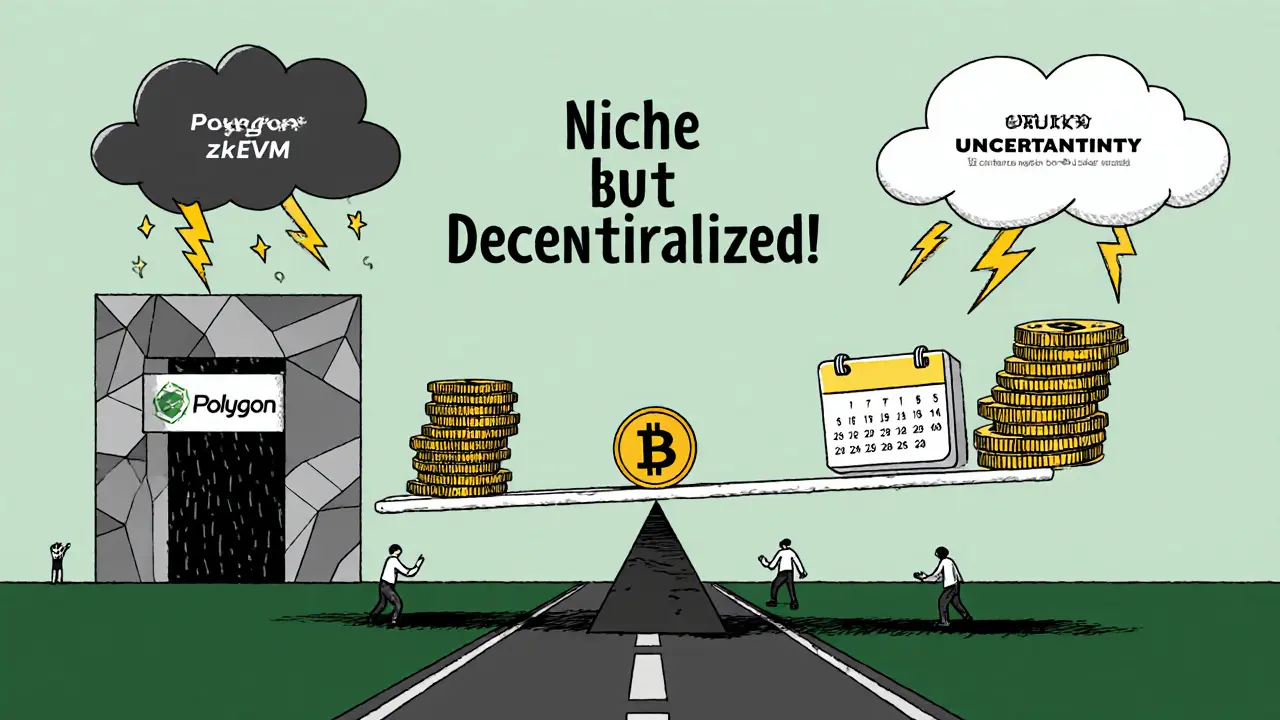
Risks you should weigh
Every DeFi tool carries trade‑offs. Here are the most common pitfalls with MAI:
- Liquidity crunch: With only ~ $45K moving each day, large swaps will cause noticeable price impact.
- Peg volatility: While most price feeds show MAI hovering around $0.99‑$1.02, some aggregators reported a dip to $0.866, a 13% de‑peg that may scare casual users.
- Smart‑contract risk: The QiDAO contracts have not been audited by a top‑tier firm that you can find in a public report, so a bug could jeopardize funds.
- Regulatory uncertainty: Decentralized, crypto‑backed stablecoins sit in a grey area in many jurisdictions. Future rules could limit usage or force compliance steps.
- Collateral token risk: If the token you lock loses value dramatically (e.g., a sudden crash of MATIC), your position may be liquidated at a loss.
For small‑scale experiments-say, minting a few hundred dollars worth of MAI-the risks are manageable. For bigger positions, the liquidity and peg stability concerns become much more material.
Future outlook
The roadmap mentions a move to Polygon zkEVM, which could bring even cheaper, faster settlements. However, as of the latest data there are no active trading pairs on that layer, so the benefit is still theoretical.
What could push MAI into the spotlight?
- Listing on a major centralized exchange (Binance, Coinbase, etc.) would instantly boost liquidity.
- Partnerships with DeFi protocols that accept MAI for loans or yield farming could create demand loops.
- Transparent audits and an active community (Discord, regular dev updates) would improve trust.
If none of those happen, MAI will likely remain a niche tool for users who need a fully on‑chain, non‑KYC stablecoin on Polygon.
Frequently Asked Questions
Is MAI really pegged to $1?
Most price feeds show MAI trading between $0.98 and $1.02, but occasional de‑pegs (as low as $0.866 on some aggregators) indicate that the peg is not iron‑clad. Over‑collateralization and arbitrage usually pull it back toward $1.
How does MAI differ from DAI?
Both are crypto‑backed, but DAI accepts a broader mix of assets (ETH, BAT, USDC, etc.) and runs on Ethereum, while MAI only uses tokens approved by QiDAO and is primarily on Polygon. DAI also has a much larger market cap and liquidity.
Can I use MAI to pay for goods?
Only merchants that specifically accept MAI can receive it. Because liquidity is low, most retailers prefer USDC or USDT, so MAI is rarely used for everyday purchases.
What gas token do I need?
All transactions on Polygon require MATIC for gas. A few dollars of MATIC cover multiple mint, swap, and liquidation‑avoidance actions.
Is MAI safe to hold long‑term?
Safety depends on three things: the security of QiDAO’s contracts, the health of the collateral tokens, and the protocol’s ability to stay pegged. Without a formal audit and with limited liquidity, many users keep only a small amount for specific DeFi strategies.
- Poplular Tags
- MAI
- MIMATIC
- stablecoin
- QiDAO
- Polygon







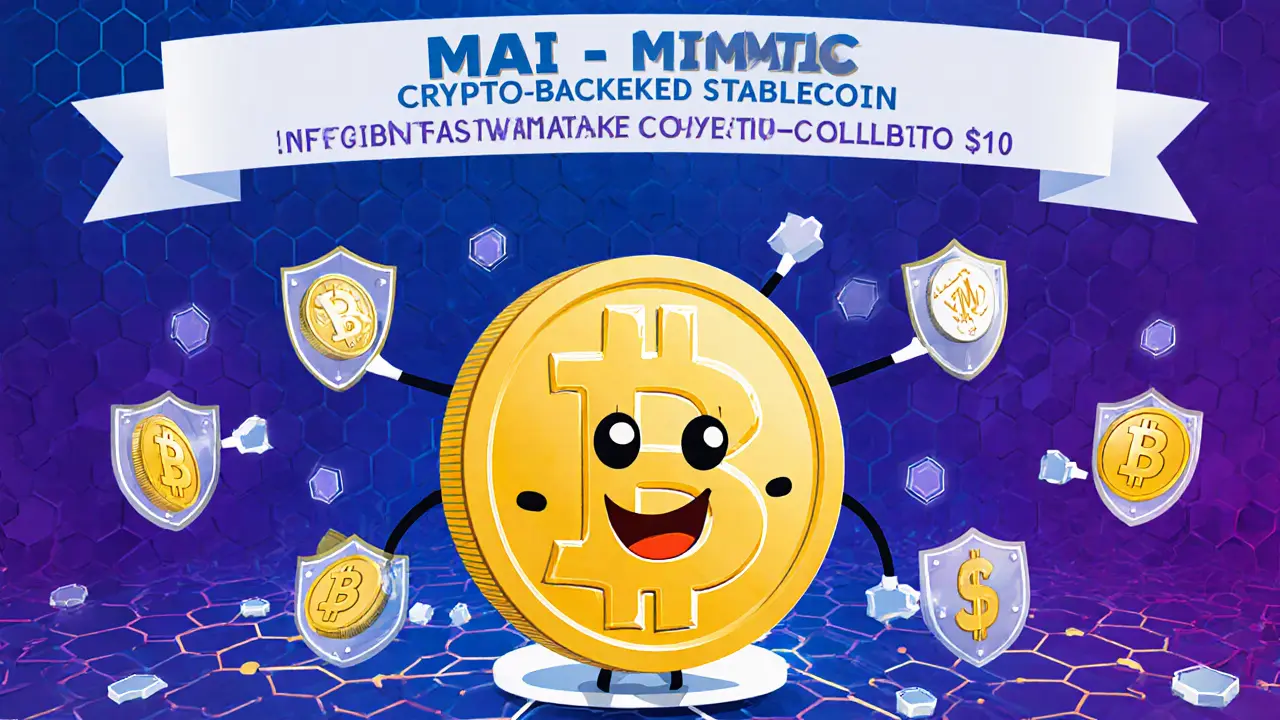
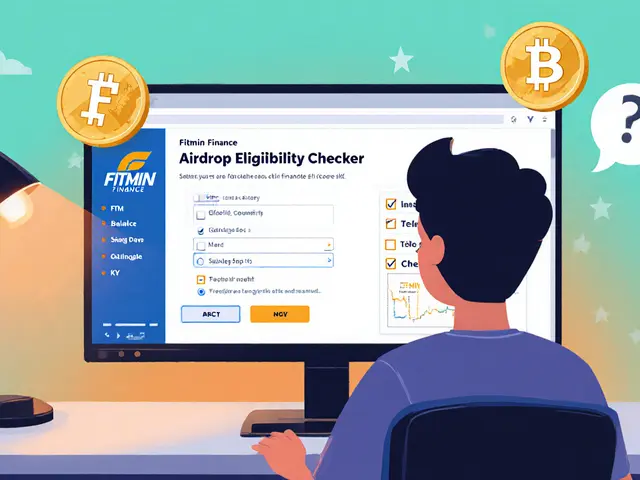
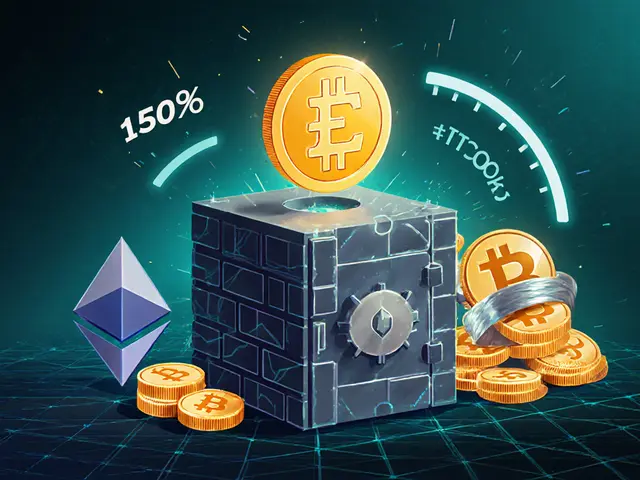
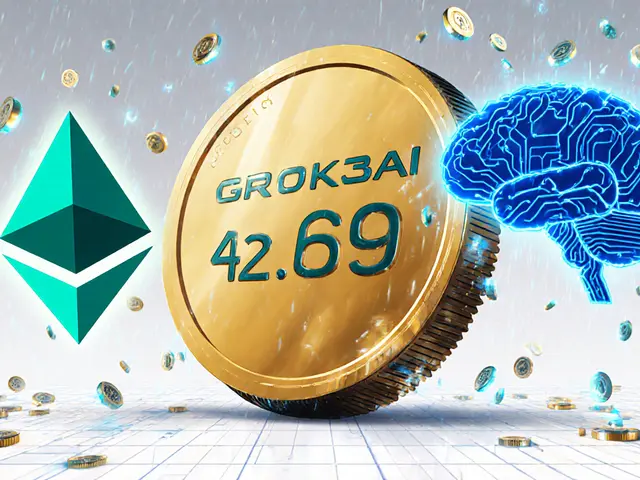

People Comments
Great intro to MAI and the calculator-super helpful! 😊